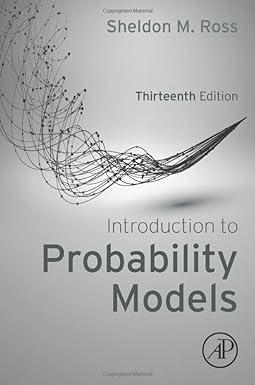The Discrete Hazard Rate Method: Let X denote a nonnegative integer valued random variable. The function (n)
Question:
The Discrete Hazard Rate Method: Let X denote a nonnegative integer valued random variable. The function λ(n) = P{X = n|X ≥ n},n ≥ 0, is called the discrete hazard rate function.
(a) Show that P{X = n} = λ(n)
n−1 i=0 (1− λ(i)).
(b) Show that we can simulate X by generating random numbers U1,U2, . . .
stopping at X = min{n: Un ≤ λ(n)}
(c) Apply this method to simulating a geometric random variable. Explain, intuitively, why it works.
(d) Suppose that λ(n) ≤ p < 1 for all n. Consider the following algorithm for simulating X and explain why it works: Simulate Xi,Ui, i ≥ 1 where Xi is geometric with mean 1/p and Ui is a random number. Set Sk = X1 +· · ·+Xk and let X = min{Sk: Uk ≤ λ(Sk)/p}
Fantastic news! We've Found the answer you've been seeking!
Step by Step Answer:
Related Book For 

Question Posted:






